SEO trends are always changing. To get or stay ahead, you need to stay up to date.
Leveraging new SEO techniques can help you drive more organic traffic and improve your search engine rankings.
Let’s explore the latest SEO trends. And how you can optimize for them.
1. Artificial Intelligence Now Answers Search Queries
Artificial Intelligence (AI) is an SEO trend that has the potential to transform SEO as we know it. Because it does much of the work for searchers.
Generative AI is AI that can create new content based on the data it was trained on. And in the context of search, it means that the search engine can formulate a summary in response to a query.
Users don’t need to scroll through the results and visit the sites listed. They can just read the AI-generated summary at the top of the page.
Microsoft has been leading the charge with Bing AI. They integrated the AI-powered chatbot ChatGPT into the Bing search engine in February 2023. And Bing now creates its own copy to respond to users’ queries.
For example, let’s consider the query, “Should I take my kids aged 3 and 5 to Disneyland or Disney World?”
Bing uses generative AI to create a customized response:

Google has also launched an AI chatbot named Bard. And started to experiment with Search Generative Experience (SGE)—their term for search supported by generative AI.
SGE is currently available for select users in the U.S. And it provides an AI-powered summary at the top of the results with the warning, “Generative AI is experimental. Info quality may vary.”

What to Expect from This Trend
If users get what they need from the summary at the top of the SERP, they’ll be less likely to click through to your site.
But users will sometimes still need to consult authoritative sources and explore valuable content in detail. At least for complex queries where more research is needed.
After all, sites still get clicks for searches where Google already shows a featured snippet. And users will need to go through a site for many types of queries (like those related to making a purchase).
How to Leverage This Trend
It’s too soon to say for sure how to optimize for generative AI.
People will probably still want to visit authoritative websites to conduct more in-depth research even if their primary question was answered without a click. So, insightful content that addresses search intent will still provide an opportunity to attract search traffic.
And sites have a chance of being mentioned in the AI-generated summary. Bing credits its sources, so users can click on them to get more information.
For example, this search for “What are some fun things to do in Paris?” produces an AI summary and credits tripadvisor.com.au, lonelyplanet.com, and three more sources.

Users may click on at least one of those sites to learn more.
Wondering how to get into the AI-generated summary?
Bing’s algorithm considers how relevant the content is to the search query, the content’s quality, and the website’s authority. And Google’s SGE will likely work in a similar way.
2. AI Copywriting Tools Will Accelerate Content Creation
AI isn’t just shaking up how search engines deliver results. It’s also become an entire category of copywriting tools you can use to ramp up your content production efforts.
What are they, exactly?
AI copywriting tools produce written content using machine learning and natural language processing (NLP).
They can help you write anything from ad copy to blog posts.
What to Expect from This Trend
Content teams are likely to use AI to support their efforts, rather than researching and writing everything from scratch. And SEO could become more competitive, as businesses find it easier to produce larger volumes of content.
How to Leverage This Trend
Try incorporating AI writing tools into different stages of your content production process (such as ideation and outlining). To accelerate content production.
But don’t completely rely on AI to create your copy. Because what AI tools produce isn’t always accurate or up to date.
So, use your common sense. And only publish valuable, fact-checked content that represents your brand well.
There are many AI content tools out there. Some of the main ones include the Semrush AI Writing Assistant, ChatGPT, Jasper AI, and Copy.ai.
With the Semrush AI Writing Assistant, you can generate blog posts, create outlines, generate ideas for catchy blog titles, and more.
Here’s how to create a blog post using AI Writing Assistant:
Open the tool and click “Article Generator.”

Next, select your language. Then, add a title, your target keywords, and at least three article subheadings. And click “Generate.”

The tool will then generate text that you can use as a basis for your blog post. And you (or another team member) can now jump in to start editing and expanding on the provided text.

3. Voice Search Is More Popular Than Ever
Voice search via personal assistants (like Google Assistant, Apple’s Siri, and Amazon’s Alexa) is predicted to continue growing, according to Statista research. So, it’s important to make sure your site is optimized for voice search queries.
This is especially true when you consider that 50% of the U.S. population uses voice search daily, according to research from UpCity.
Google and Bing already offer voice search as standard options in search. You can see the speaker icon next to the search bar:
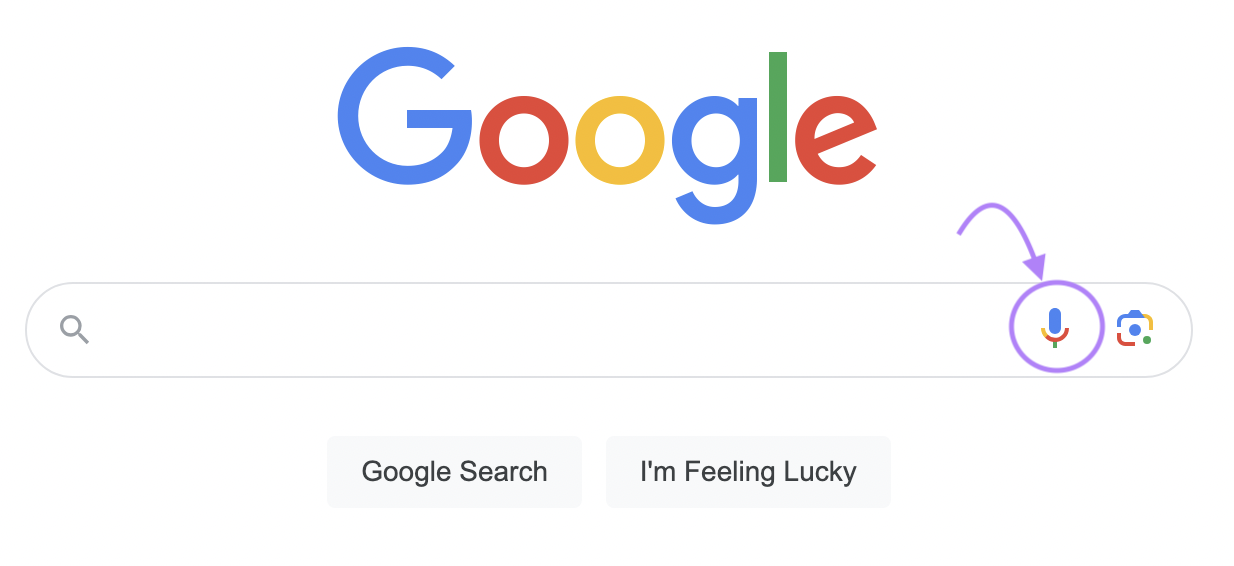
What to Expect from This Trend
Ranking number one will be more important than ever. Because Google often uses the featured snippet at the top of the search engine results page (SERP) to answer voice searches.
This is very different from traditional search, where users can scroll down through various results. With voice search, a single result gets visibility. So you need to be on top of your SEO game.
How to Leverage This Trend
Voice search is more conversational than text-based searches. Which can inform your content.
For example, a person might say, “What kind of workouts can I do at home to keep fit?” But they might type the words, “home fitness workouts.”
To optimize for voice search queries, you should use keywords and content that sound natural.
To find good keywords for voice search, you can use Semrush’s Keyword Magic Tool.
Open the tool and type in a seed keyword (a broad search term related to your business or a specific topic). Select your location, and click “Search.”

Next, you’ll see a list of keywords along with key information, including the monthly search volume, keyword difficulty, intent, and more.

An effective way to find long-tail keywords is by filtering for low difficulty keywords. Because long-tail keywords often have a low difficulty score. So, set a custom range of 0 to 29 (which will cover “easy” and “very easy” keywords):
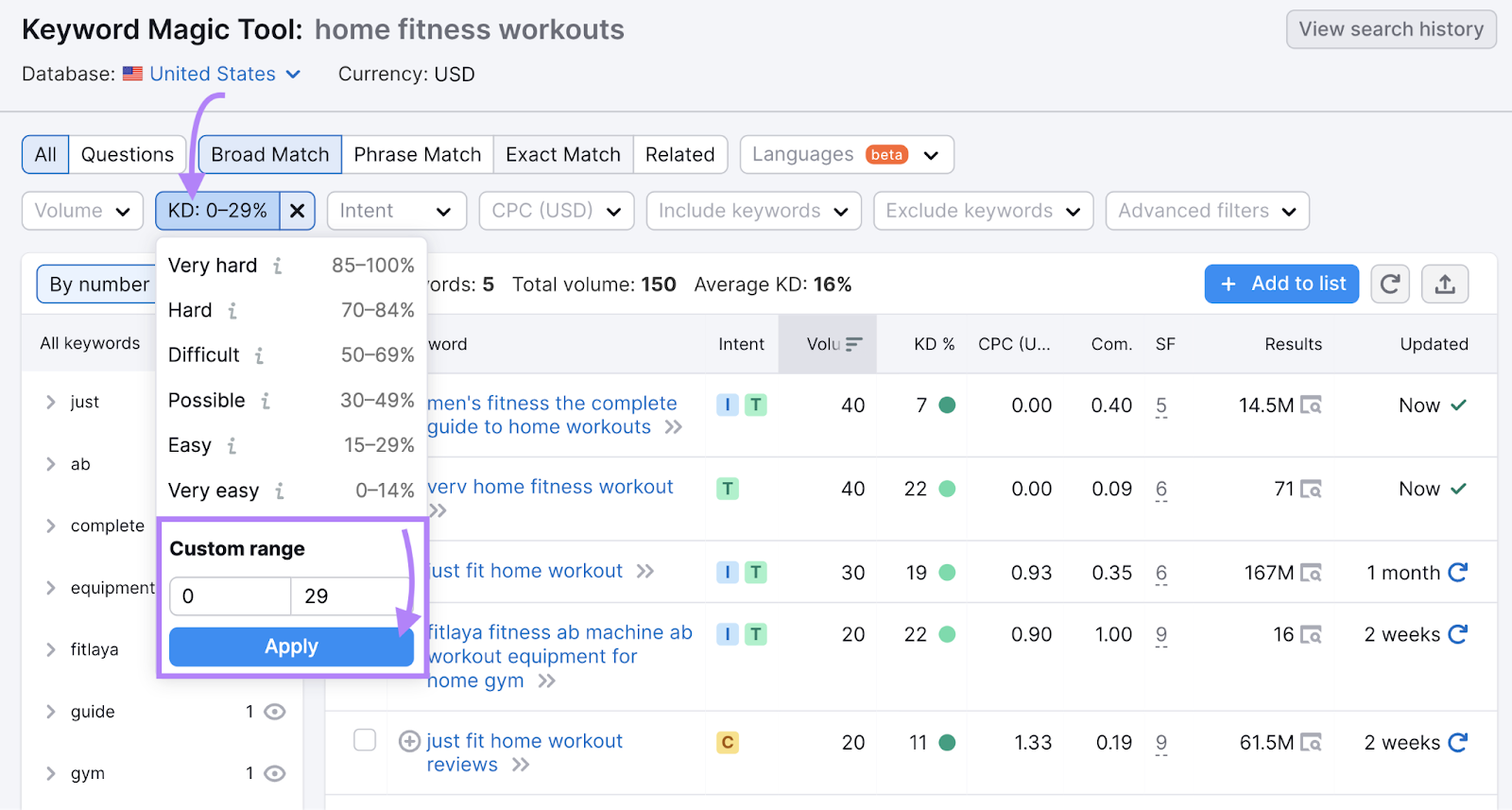
As voice search is more conversational, users often phrase their queries like a question. To find long-tail, question-based keywords, select “Questions.” (You may need to remove your keyword difficulty filter to broaden your results.)

Check the box on the left and hit “Add to keyword list.” You can create a new list and call it, for example, “Voice search queries.”

The final step to create new content targeting those keywords.
4. Visual Search Is Becoming More Advanced
Users are becoming accustomed to new ways of searching. In fact, 30% of U.S. adults aged 34 and younger have used visual search for shopping, according to research published by Insider Intelligence.
Visual search allows users to use images rather than text to look for information. Or as Bing puts it, “See it, search it.”
With Bing Visual Search, users can upload an image or use their camera to search for similar images or information.

Google has a similar feature called Google Lens. And users can use their cameras or upload images to search for information or products.
Google also introduced Multisearch in 2022. Which allows users to combine multiple ways of searching. Users can search via text, voice, and images:

For instance, you can upload a screenshot of a blue shirt and type “yellow” to find similar styles in a different color:
Multisearch is currently available via the Google Lens app and within other Google apps.
What to Expect from This Trend
Google Lens now powers 10 billion searches each month (up from 3 billion in 2021). As visual search gains traction, users will turn to images and visual content to find information.
So, creating and optimizing images to target visual search users will play a more important role in SEO.
How to Leverage This Trend
With the number of visual searches increasing, you’ll want to make sure Google shows your content for Google Lens queries. Implementing image SEO best practices is essential.
Here are a few things to check:
- Ensure images are representative: For example, let’s say you’re a clothing store, and someone searches via Google Lens for a yellow shirt. Don’t display an image of a black shirt on your site, and just say the item is also available in yellow. Google Lens relies on image recognition, so the more accurately your images represent your products or services, the better
- Use high-quality, appealing images: Google’s developer documentation recommends using high-resolution images because they appeal to users more. So, your images should be good quality and show your products in a good light
- Optimize image file names and alt text: Ensure file names and alt text accurately describe the image. This helps search engines understand the context. A Backlinko study found that 11.4% of all Google Lens results contain alt text terms matching the query, and 22.6% had a relevant filename
- Use structured data: Structured data is a way of marking up content on your website to provide context and additional information. This makes it easier for search engines to understand your content
5. Video SEO Is Becoming More Important
After Google, YouTube is the second most used search engine. And Google incorporates video content into its main search results.
Google is especially likely to show videos at the top of search engine results when the user is looking for particular types of content like music and how-to tutorials.
If you search for “how to bake a cake,” Google displays numerous videos on the topic:

What to Expect from This Trend
As video is one of the most popular ways to consume content, it’s a good idea to create video content and optimize it for search. That means video SEO will play an even greater role going forward.
How to Leverage This Trend
Optimizing your videos for search is the best way to take advantage of this trend.
There are a few ways to do that:
- Add chapters to your YouTube videos: Chapters break up your video into sections. This helps Google (and viewers) to understand what your video is about
- Include closed captions (CC): Closed captions enable Google to understand what’s being said in your video. YouTube can automatically generate captions, but they aren’t always accurate. So it’s better to add them manually.
- Optimize your title, tags, and description: Ensure all descriptive elements include your main keywords to help Google understand your video
To find the right keywords for your videos, you can use Keywords Analytics for YouTube.
Sign up for a free trial. Then, click “Get started” under the “Keywords Research” section.
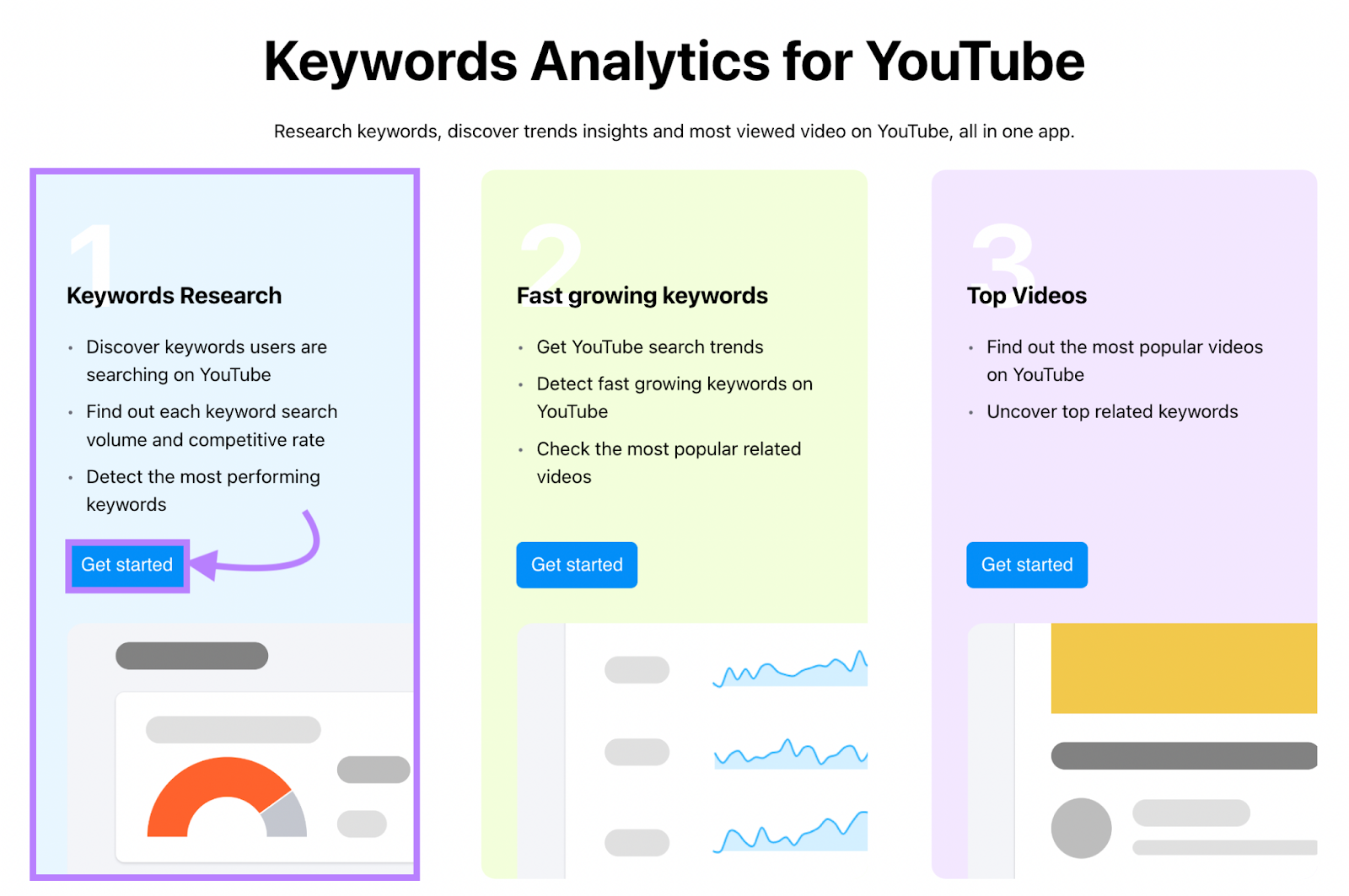
Select your location and search for a keyword that’s related to your video or industry (e.g., “skincare”).

You’ll find related YouTube search terms and key metrics. Like “Search Volume” and “Competitive rate” (level of competition and therefore difficulty) for the last day, week, and month.
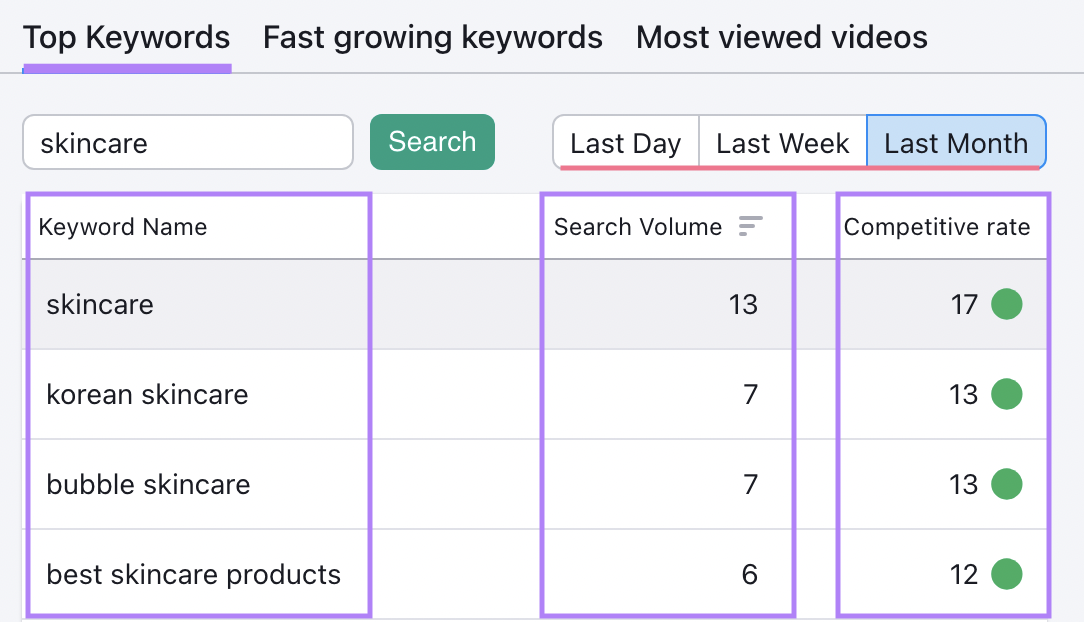
Navigate to the “Fast growing keywords” tab to discover trending topics on YouTube.

Then, you can make a list of keywords that are relevant to your business. You’ll probably want to focus on keywords that have a low competitive rate, and at least some monthly searches.
Finally, you can create content or optimize your existing content to target those keywords.
6. Featured Snippets Are Evolving
Google often highlights one result that answers a query particularly well. This is known as a featured snippet—an area that Google is experimenting with.
For instance, the query “how to start a business” displays step-by-step instructions from Forbes. Notice how the featured snippet is situated at the very top, known as position zero:

There are different kinds of featured snippets, including paragraphs, definitions, answers, lists, and tables. And you can optimize your content to rank for them.
Google recently introduced a new format that lets users select additional options (they appear as buttons under the search bar) to modify their search to display a featured snippet for their situation. Like in this query for “How to write an email for a job”:

What’s more, Google has started to experiment with multiple featured snippets:

What to Expect from This Trend
Featured snippets are the most prominent position available in the SERPs. So, multiple snippets could mean more opportunities to gain visibility.
On the flip side of the coin, those who have worked hard to earn position zero could find themselves sharing the top spot with other sites.
How to Leverage This Trend
Here’s how to boost your chances of ranking for a featured snippet:
Use Keyword Magic Tool to see which queries related to your business display featured snippets.
Enter your keyword, select your location, and click “Search.”

You can filter for keywords that trigger a featured snippet to be displayed in the results.
Click “Advanced filters.” Then, under “SERP Features” check the box next to “Featured snippet.”

Once you decide which keywords you want to focus on for featured snippets, you can create content designed to target those specific terms.
To increase your chances of getting a featured snippet, you’ll want to use optimal formats: Paragraphs, lists, tables, and videos.
For more info, check out our step-by-step guide to featured snippets.
7. Helpful, Expert Content Is More Important
Google recently made two important updates to how it evaluates content quality. Experts with first-hand experience should be involved. And content needs to be genuinely helpful.
In December 2022, Google added “experience” to its Search Quality Rater Guidelines—the handbook that raters use to evaluate the quality of search results. So, Google’s quality criteria now include Experience, Expertise, Authoritativeness, and Trustworthiness (E-E-A-T).
The helpful content update, also in December 2022, encourages original, informative content with unique, valuable insights that are useful to people—not content designed solely for search engines.
The helpful content update aims to eliminate content that has been created solely for the purpose of ranking in search engines. Like mass-generated AI content. Instead, Google says it wants to see more “people-first content” that meets search intent.
What to Expect from This Trend
The focus on expertise signifies a new, expert-driven approach to content and SEO. While E-E-A-T isn’t a ranking factor, it is an opportunity to show Google that your content is top quality.
Google says to expect more pages in the SERPs that are based on first-hand experience. Or created by someone with deep knowledge in a given subject.
So, SEO professionals and content marketers could find themselves doing more interviews and collecting quotes in future. And subject matter experts are likely to play a greater role in content creation.
How to Leverage This Trend
One easy way to show expertise is to include author bios. So users know the credentials of the subject matter expert who has written the content.
Like this:

You can also:
- Link to authoritative sources like respected news sites, universities, and research institutions
- Conduct interviews and provide quotes from thought leaders and experts sharing their unique perspectives
It’s important to understand that helpful content is a sitewide signal. So, it’s important to evaluate and optimize your existing content, rather than just creating new pieces.
8. Microsoft Bing Is Taking On Google
Microsoft Bing reached 100 million active daily users just weeks after integrating ChatGPT, according to The Verge. And is now the second most popular traditional search engine in the world when it comes to traditional search engines like Google, Yahoo, Baidu, and the like.
The same article reveals that Google has more than 1 billion daily active users. So, Bing probably won’t be putting Google out of business anytime soon.
Bing’s growth has slowed down now that the initial excitement around ChatGPT has started to calm down.
Nonetheless, Microsoft’s rapid progress in AI may make Bing a more serious competitor to Google.
What to Expect from This Trend
For years, “search” was synonymous with Google. Now, users (and brands) have a clearer alternative.
This could mean the field of SEO is becoming more diverse — not just centered around one search engine.
How to Leverage This Trend
It is worth making sure that your site is optimized for Microsoft Bing. Especially if you’re targeting Millennials.
Audience data from One2Target shows that over 60% of Bing users are in the 25-34 age group.

You can read our guide to Bing Search to learn how to optimize your site for Bing.
Here are a few tips:
- Use exact match keywords: Google can generally handle synonyms, variations, and natural language better than Bing. So, use exact match keywords to make sure Bing can understand your content. You can even use the Bing Webmasters tool for keyword research.
- Leverage multimedia: Bing makes great use of video. Even more so than Google on many SERPs.
- Social signals: Bing takes social signals into account. So, ensure your brand has a strong online presence and shares its content on social media.
9. User Experience Is Playing a Larger Role in Rankings
User experience matters to Google. And Google is tweaking the user experience metrics (called Core Web Vitals) it uses to evaluate your site.
In March 2024, Google will make a change to the Core Web Vitals metrics. Interaction to Next Paint (INP) is a new metric that will replace First Input Delay (FID).
INP measures how quickly a webpage responds to user interactions like clicking on a button or link. It evaluates the time it takes from the moment a user initiates an interaction to when the next visual feedback (like a change in the page) is displayed.
The INP metric is designed to provide a better assessment of how quickly a user can interact with the elements on a page.
According to Google’s documentation for developers, a good INP value is around 200 milliseconds or under. Here is a guide from Google on how to optimize for INP.
What to Expect from This Trend
Google knows that users value fast sites that load seamlessly and are easy to navigate. So, technical SEO and user experience will continue to be of utmost importance.
It’s essential to conduct a technical SEO audit and ensure your user experience and page speed are up to scratch.
How to Leverage This Trend
You can use the Site Audit tool to check your page speed and other factors that affect the user experience.
To get started, open the tool. Then, enter your site in the search bar and click “Start Audit.”

Next, configure the settings and click “Start Site Audit.”
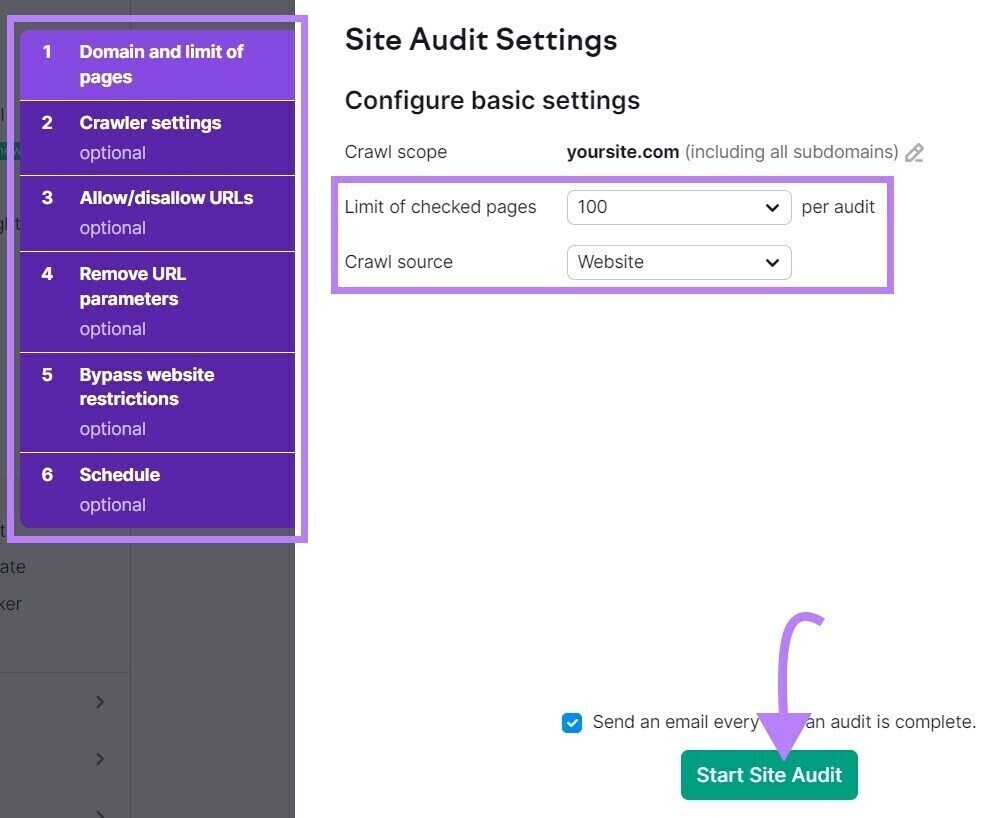
You’ll see a dashboard with an overview of your site health and other key metrics. In the “Core Web Vitals” section, click “View details.”

You can inspect most of your Core Web Vitals metrics:

You can also navigate to the “Issues” tab to find a complete list of what to work on.
Use the Latest SEO Trends to Your Advantage
Now, you know all about the latest SEO trends.
But knowledge alone isn’t enough. You need to act on that knowledge to remain competitive.
And there's no better place to begin than by conducting a free site audit with Semrush.
Get started now for free.
